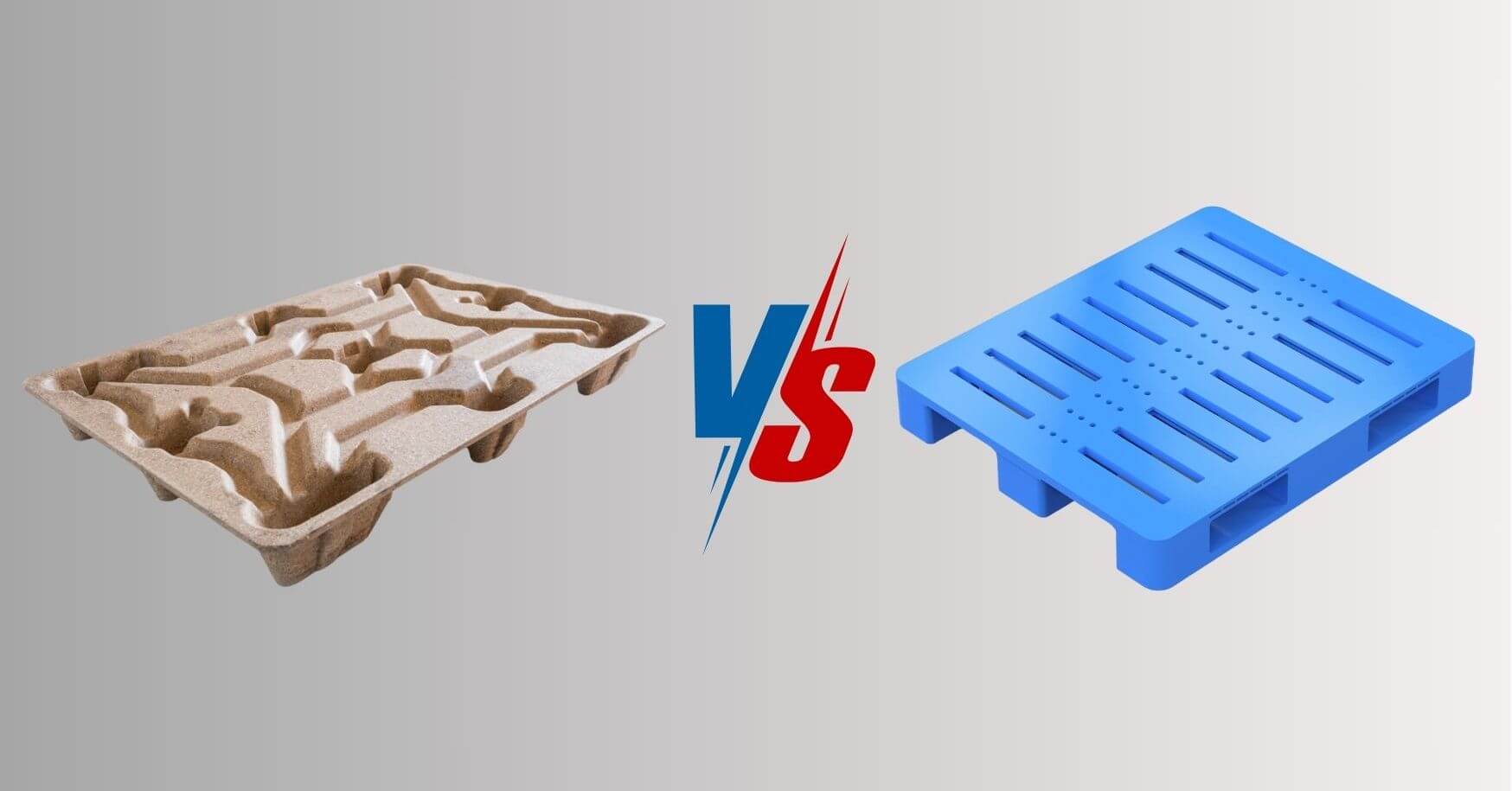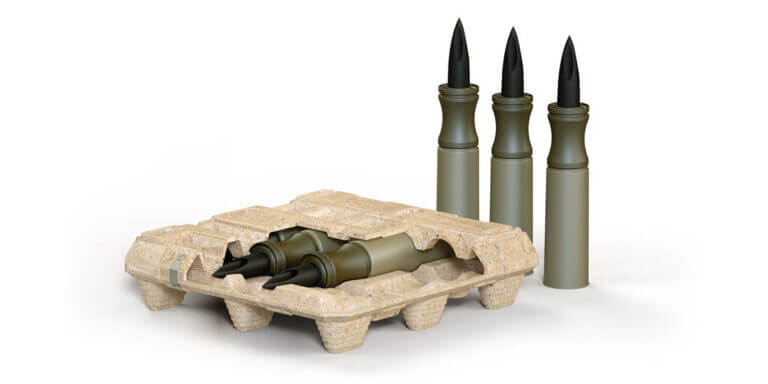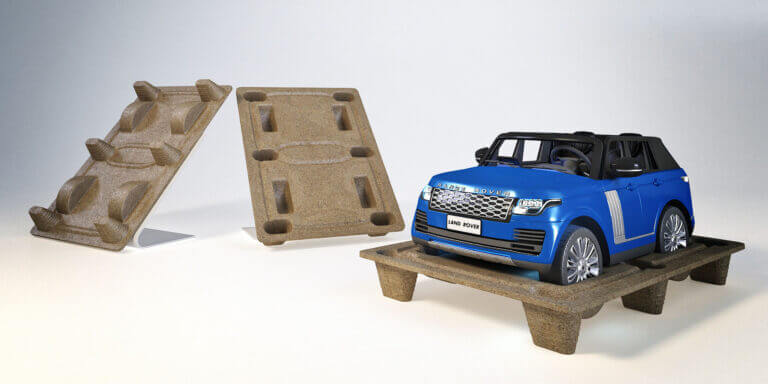Pressed or plastic pallets – which will work better?
Choosing the right transport pallets is an important decision that affects a company’s costs, logistics and ecology. In a previous article, we compared pressed and wooden pallets – if you’re wondering about this comparison, check out our earlier post.
This time we will look at the differences between pressed and plastic pallets. Both options have their advantages and limitations, and their choice depends on the specifics of your business.
Purchase and operating costs
Price is one of the key factors in choosing transport pallets.
Pressed pallets tend to be cheaper to both produce and purchase. They are made from wood fibers molded under high pressure, which makes them good for one-way transport or short-term use.
Plastic pallets require a larger initial investment, but their durability means they can be more cost-effective in the long term. They are ideal for companies that repeatedly use the same pallets, especially in closed logistics systems.
If low cost is a priority, pressed pallets are a better choice. If you are looking for a long-term investment, plastic pallets may be more economical.
Durability and strength
The damage resistance of pallets is crucial in industries that transport heavy loads.
Pressed pallets are sturdy and resistant to heavy loads, and tests have shown that they can be used for several years, even in changing weather conditions. To ensure their maximum service life, it is recommended to store them in a dry environment.
Plastic pallets are distinguished by their high resistance to moisture, temperature changes and impacts. They are more resistant to intensive use and are not subject to mold or pests.
In terms of durability and resistance to the elements, plastic pallets have an advantage, but proper use and storage of pressed pallets can significantly extend their life.
On our site you will find more information about the strength of pressed pallets.
Weight and payload
The weight of pallets affects transportation costs and ease of handling.
Pressed pallets are lighter than traditional wooden pallets, and their relatively light weight makes them easier to handle by hand and reduces transportation costs.
Plastic pallets offer a wide range of weights and load capacities, depending on the design and material used. Lighter models are great for air transport, while reinforced versions are capable of carrying very heavy loads without risk of damage.
If optimizing transportation in terms of strength-to-weight ratio is key, both options can be attractive, depending on the specifics of the cargo.
Ecology and sustainability
Companies are increasingly paying attention to the environmental impact of their operations.
Pressed pallets are biodegradable and can be recycled. At the end of their useful life, they can be shredded and reused to make new pallets or wood-based panels.
Plastic pallets can be made from recycled materials and are recyclable. However, their recycling can be more complicated depending on the type of plastic used.
The choice of the most environmentally friendly solution depends on the planned life cycle of the pallet and available recycling systems. If biodegradability and reuse of the raw material is a priority, pressed pallets will be a better choice.
Hygiene and application in sensitive industries
Some industries, such as food and pharmaceuticals, have high sanitary requirements.
Pressed pallets are heat-treated during the manufacturing process, which eliminates pests and makes them safe for international transport. However, with prolonged exposure to moisture, they can promote mold growth if not stored properly. However, it is worth noting that, optionally, pressed pallets can be covered with a special waterproof coating, which will extend their life.
Plastic pallets are non-absorbent and easy to disinfect, which makes them meet the strict hygiene standards required in the food or medical industries.
In sectors requiring high cleanliness, plastic pallets are often chosen for their ease of sterility.
Personalization and additional features
In some industries, the ability to customize pallets to meet specific needs is crucial.
Pressed pallets can be produced in various sizes and shapes, according to the customer’s requirements. In addition, it is possible to embed RFID chips in them, making it possible to monitor cargo and track it in logistics systems.
Plastic pallets also offer a wide range of modifications, such as additional reinforcements, anti-slip surfaces or RFID systems.
Both pressed and plastic pallets can be customized for specific applications – the choice depends on your preferences. Here are examples of pressed pallet customization.
Summary – which palettes to choose?
The decision between pressed and plastic pallets should be tailored to the individual needs of the company.
Pressed pallets are the perfect solution if low cost, biodegradability and recyclability are priorities. They are lightweight, sturdy and can be custom molded.
Plastic pallets will work well where durability, hygiene and optimizing transportation costs over the long term are key.
For more information about pressed pallets, see our earlier article: Pressed palettes vs. wooden. If you are interested in modern solutions, check out BosPal’s range of pressed pallets.




